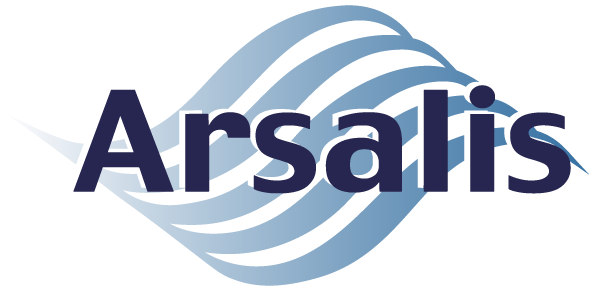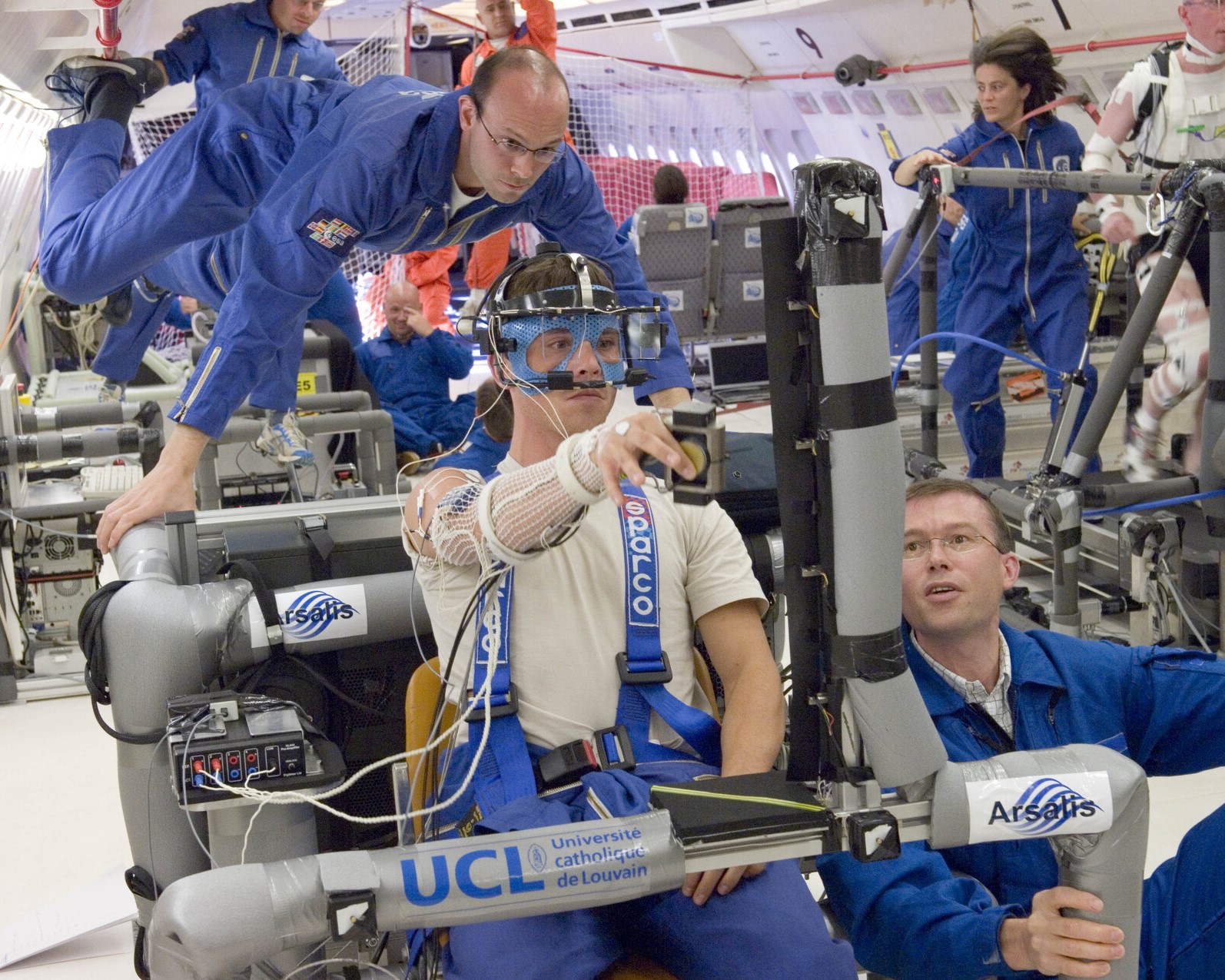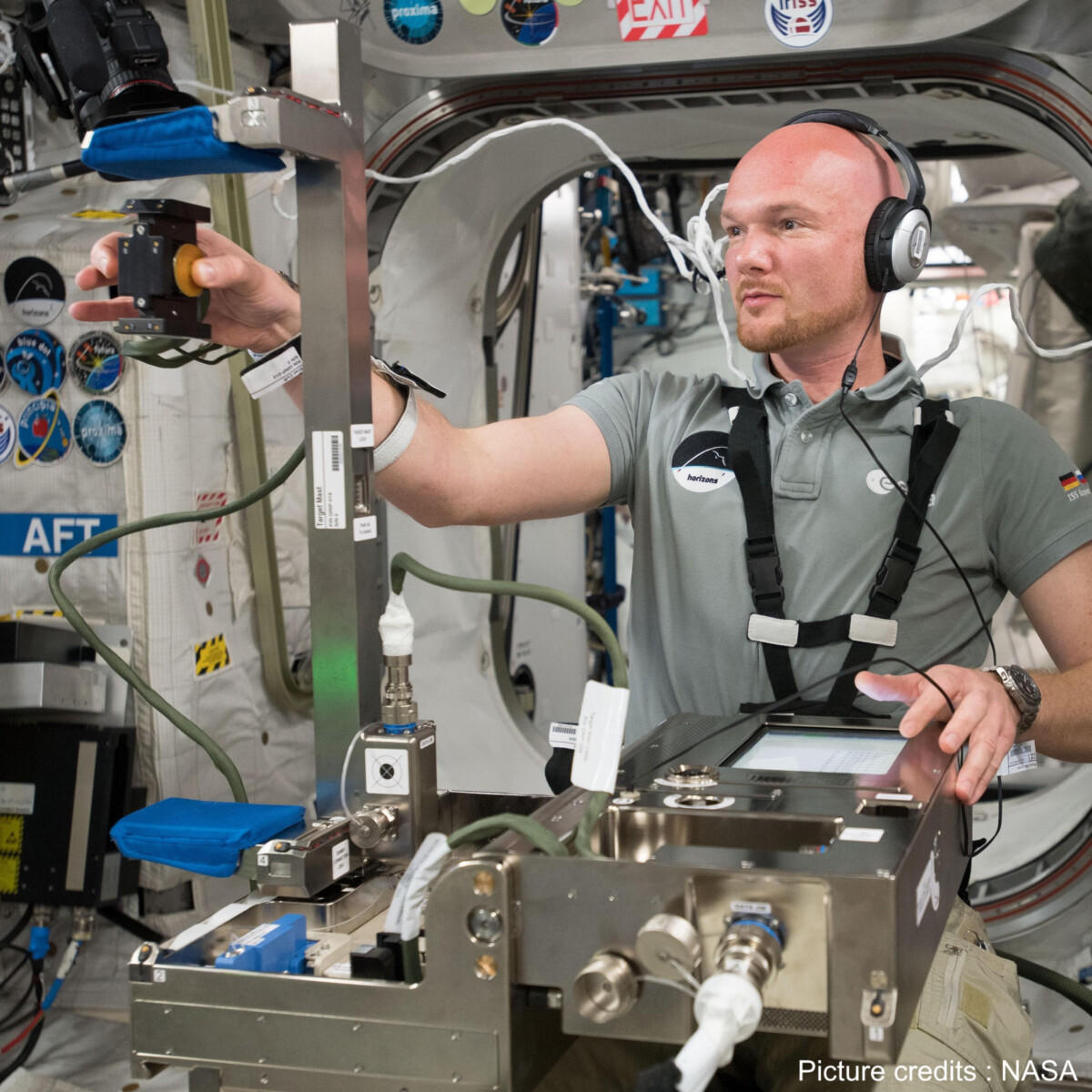GRIP
GRIP explores the motor control of the precision grip when manipulating objects at the fingertips and the role of tactile perception for dexterous manipulation. The project, developed by Arsalis, Qinetic Space and UCLouvain with the European Space Agency (ESA), allows scientists to investigate the interplay between feed-forward and feedback mechanisms in controlling manipulation, studying individuals in unique environments like microgravity.
Objectives
Motor actions result from a complex combination of motor commands that control muscular contractions to produce the desired movements. To reliably achieve satisfactory motor actions, one must have an internal knowledge of movement dynamics and must also continuously compensate for external forces acting on the body, including omnipresent gravitational forces. Evidence for an internal representation of such dynamics can be found in the literature. However, the role that gravity plays in internal models of dynamics has yet to be clarified. In the GRIP project, scientists use experimental and modelling approaches to elucidate the role of gravity in sensorimotor coordination.
Results
Motor prediction has been shown to be efficiently processed in hypergravity and microgravity conditions, though human subjects perform better in the former than in the latter. That is, predictions in hypergravity have been reported to be very good, whereas anticipatory grip force modulation in absence of gravity are more uncertain. A series of human subject experiments involving dexterous manipulations have been performed during exposure to hyper- (1.8 g), micro- (0 g), Lunar (0.16 g) and Martian (0.38 g) gravity induced by parabolic flight. The GRIP project is in the International Space Station since 2014 to study the long-term effects of microgravity on dexterous manipulation. Upper limb kinematics, precision grip dynamics, task-specific muscular activities, and digit moisture is being recorded and analysed.
References
- Augurelle AS, Penta M, White O, Thonnard JL.
The effects of a change in gravity on the dynamics of prehension.
Exp Brain Res. 2003 Feb;148(4):533-40. doi: 10.1007/s00221-002-1322-3. Epub 2002 Nov 15. PMID: 12582839. - Crevecoeur F, Thonnard JL, Lefèvre P.
Optimal integration of gravity in trajectory planning of vertical pointing movements.
J Neurophysiol. 2009 Aug;102(2):786-96. doi: 10.1152/jn.00113.2009. Epub 2009 May 20. PMID: 19458149. - Crevecoeur F, McIntyre J, Thonnard JL, Lefèvre P.
Movement stability under uncertain internal models of dynamics.
J Neurophysiol. 2010 Sep;104(3):1301-13. doi: 10.1152/jn.00315.2010. Epub 2010 Jun 16. PMID: 20554851. - Crevecoeur F, McIntyre J, Thonnard JL, Lefèvre P.
Gravity-dependent estimates of object mass underlie the generation of motor commands for horizontal limb movements.
J Neurophysiol. 2014 Jul 15;112(2):384-92. doi: 10.1152/jn.00061.2014. Epub 2014 Apr 30. PMID: 24790173. - Giard T, Crevecoeur F, McIntyre J, Thonnard JL, Lefèvre P.
Inertial torque during reaching directly impacts grip-force adaptation to weightless objects.
Exp Brain Res. 2015 Nov;233(11):3323-32. doi: 10.1007/s00221-015-4400-z. Epub 2015 Aug 12. PMID: 26265124. - Opsomer L, Théate V, Lefèvre P, Thonnard JL.
Dexterous Manipulation During Rhythmic Arm Movements in Mars, Moon, and Micro-Gravity.
Front Physiol. 2018 Jul 17;9:938. doi: 10.3389/fphys.2018.00938. PMID: 30065666; PMCID: PMC6056656. - Opsomer L, Crevecoeur F, Thonnard JL, McIntyre J, Lefèvre P.
Distinct adaptation patterns between grip dynamics and arm kinematics when the body is upside-down.
J Neurophysiol. 2021 Mar 1;125(3):862-874. doi: 10.1152/jn.00357.2020. Epub 2021 Mar 3. PMID: 33656927. - Opsomer L, Delhaye BP, Théate V, Thonnard JL, Lefèvre P.
A haptic illusion created by gravity.
iScience. 2023 Jun 28;26(7):107246. doi: 10.1016/j.isci.2023.107246. PMID: 37485356; PMCID: PMC10362320.
Relevant links
- Recherche dans le domaine du spatial :
https://uclouvain.be/fr/etudier/la-recherche-dans-le-domaine-du-spatial.html - TOUCH AND GRIP :
https://uclouvain.be/en/research-institutes/ions/cosy/touch-and-grip.html - Sensory-motor control mechanisms of dexterous manipulation :
https://www.arsalis.com/wp-content/uploads/2023/12/RA-Dexterious-Manipulation-2013-14.pdf - Gripping experiment in space :
https://www.esa.int/ESA_Multimedia/Videos/2017/06/Gripping_experiment_in_space - Space to Ground: Getting a Grip:
https://www.youtube.com/watch?v=1vDvKRtZmVw - Space to Ground: A Grip on the Future:
https://www.youtube.com/watch?v=eURrB55Tt_c


